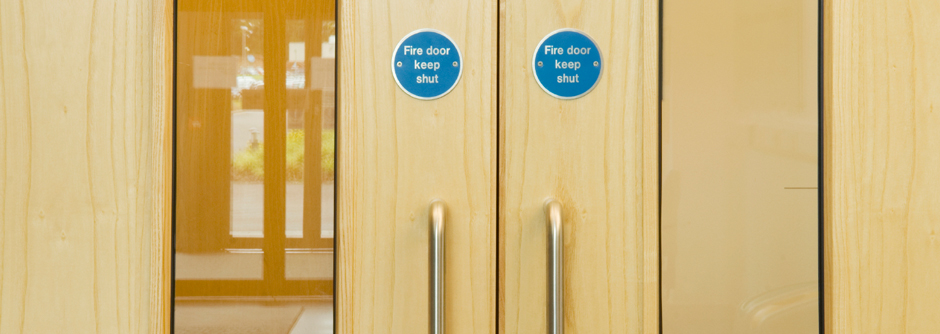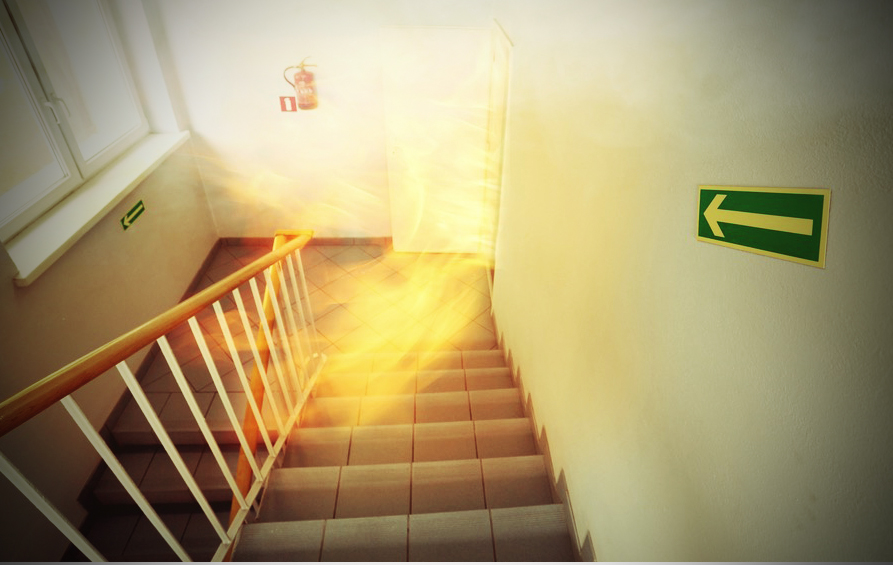Posted on March 5, 2019 in Building Maintenance

Fire doors are engineered products that provide life and property saving functions in the event of fire. It is important that they are regularly inspected and maintained to permit them to perform at their best on the one and only occasion when they are called upon to do so.
Due to the Grenfell disaster it is very important to have doors checked regularly & maintained as well as installed correctly.
Doorsets fitted with hold open devices or swing free type closers should be closed daily, particularly overnight in commercial properties when there is likely to be low building occupancy. For busy 24/7 buildings (e.g. hospitals) fire doors should be closed at least weekly. All fire doors should close effectively from any angle of opening, using only the door closer.
There are a number of reasons why doors may fail to close:-
- Foreign bodies or other objects may be obstructing the door.
- The smoke seals may be incorrectly fitted or damaged.
- If a latch is fitted, it may be malfunctioning or require lubrication.
- The closing device may need adjustment but this must only be done as a last resort and very carefully, to ensure that the door can be opened without undue force.
- Poor fire door maintenance
As part of your fire door maintenance program intumescent seals should be checked regularly, at intervals not greater than 6 months, and damaged or missing ones replaced. To maintain the designated performance potential, replacement seals should be of the same brand, size and type as the original. Any intumescent seal of the same size as the original, however, is better than none.
Mechanical items such as hinges, locks, latches, closers, floor springs etc are likely to wear over time. Maintenance provisions should comply with the hardware supplier’s recommendations where these are known. Otherwise, locks and latches may require occasional light lubrication.
Some hinges use self-lubricating bearings that will not need additional lubrication.
Where it is necessary to replace worn hardware on a fire door, the essential items should be replaced with products to the same specification as the original where possible. Otherwise, hinges, latches, locks, flush bolts, closers and other items of load-bearing or securing hardware should be of the same type and size as the original items and should have been proven for use in timber fire rated doorsets of the required performance.
Hardware that has been successfully tested in metal doorsets may not be suitable for use with timber doorsets. Intumescent gaskets may have been used under hinge blades, locks/latches for end plates, strike plates, and/or with closer fittings and in flush bolt recesses. These gaskets should ideally be replaced if possible with gaskets of the same material; alternatively, if undamaged, they should be retained and reused with the new fittings. Intumescent gaskets or mastics used for these applications are usually the low pressure type. Redundant hardware should be carefully removed.
For information on our fire door services please call 0845 604 1288 and speak with one of our friendly team or visit Fire Door Maintenance.
Categories
- Building Maintenance
- Cleaning
- Electrical
- Gardening
- General Info
- Our Service
- Pest
- Security
- Uncategorized
- Waste Solutions
Archive
- April 2024
- March 2024
- February 2024
- January 2024
- December 2023
- November 2023
- August 2023
- April 2023
- February 2023
- January 2023
- December 2022
- November 2022
- October 2022
- September 2022
- August 2022
- July 2022
- June 2022
- May 2022
- April 2022
- March 2022
- February 2022
- January 2022
- December 2021
- October 2021
- September 2021
- August 2021
- July 2021
- June 2021
- May 2021
- April 2021
- March 2021
- February 2021
- January 2021
- December 2020
- November 2020
- October 2020
- September 2020
- August 2020
- July 2020
- June 2020
- May 2020
- April 2020
- March 2020
- February 2020
- January 2020
- December 2019
- November 2019
- October 2019
- September 2019
- August 2019
- July 2019
- June 2019
- May 2019
- April 2019
- March 2019
- February 2019
- January 2019
- December 2018
- November 2018
- October 2018
- September 2018
- August 2018
- July 2018
- June 2018
- May 2018
- April 2018
- March 2018
- February 2018
- January 2018
- December 2017
- November 2017
- October 2017
- September 2017
- August 2017
- July 2017
- June 2017
- May 2017
- April 2017
- March 2017
- February 2017
- January 2017
- December 2016
- November 2016
- October 2016
- September 2016
- August 2016
- July 2016
- June 2016
- May 2016
- April 2016
- March 2016
- February 2016
- January 2016
- December 2015
- November 2015
- October 2015
- September 2015
- August 2015
- July 2015
- June 2015
- May 2015
- April 2015
- March 2015
- February 2015
- January 2015
- October 2014
- May 2013
- April 2013
- November 2011
- September 2011
- June 2011
- January 2011
- December 2010
- November 2010


